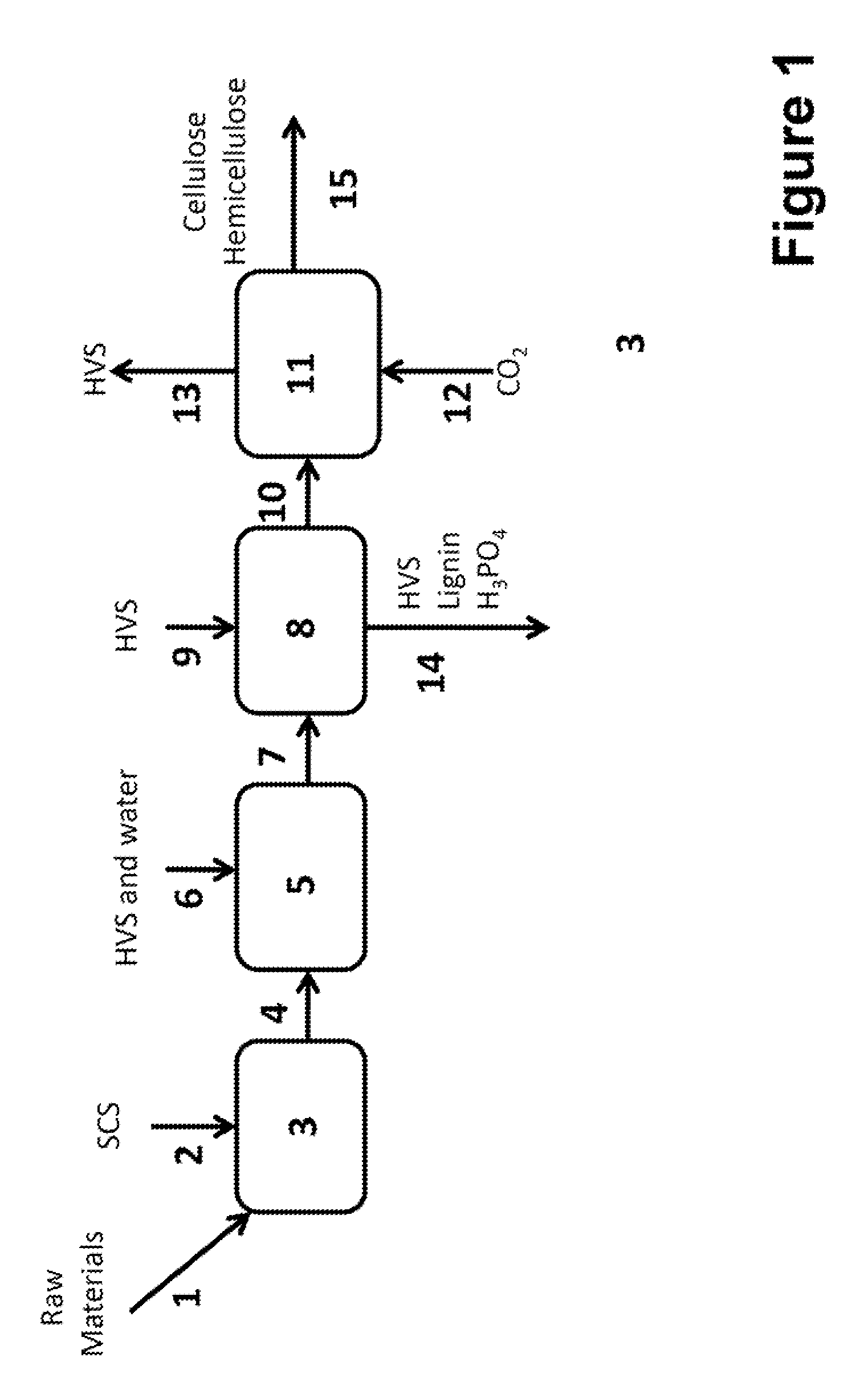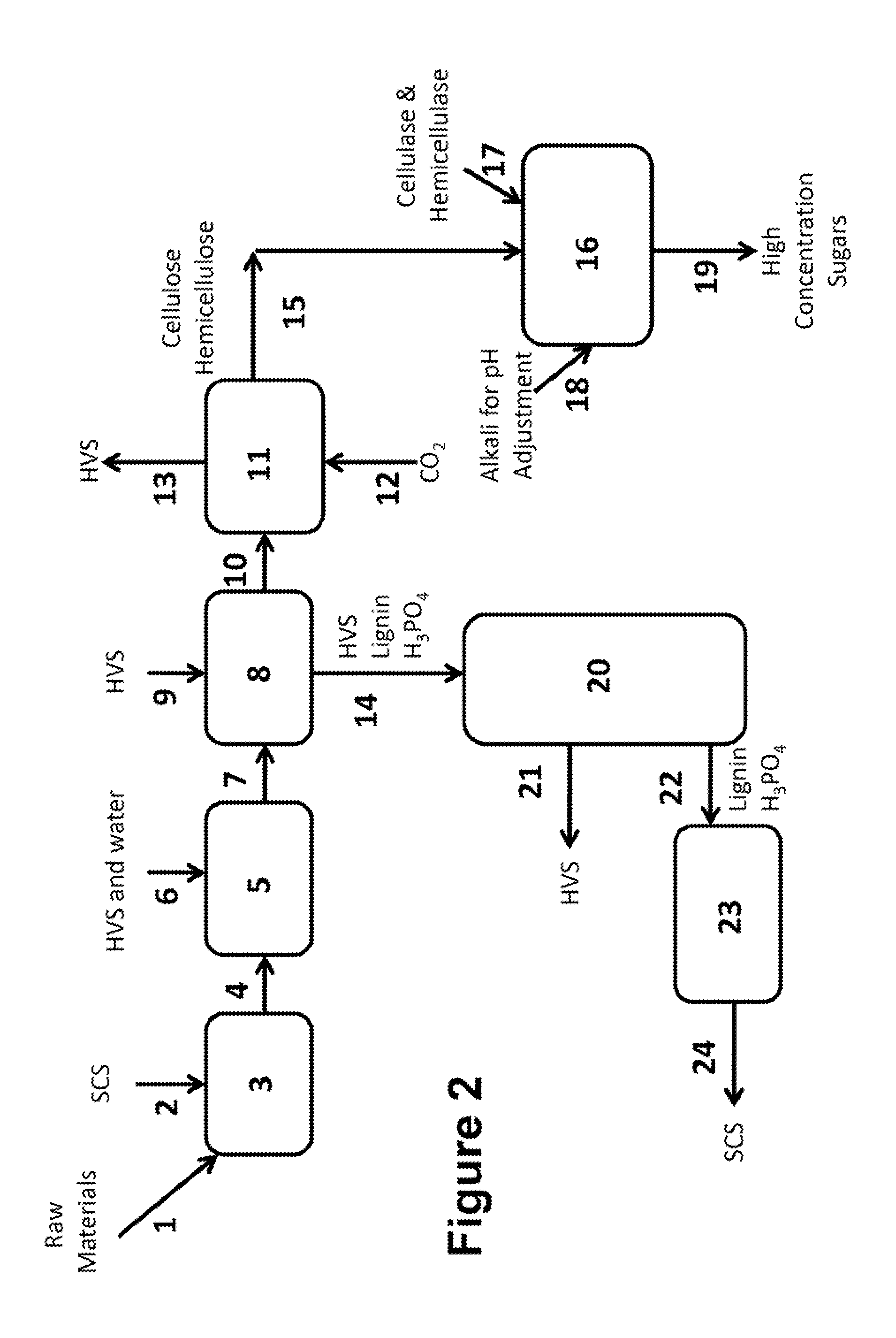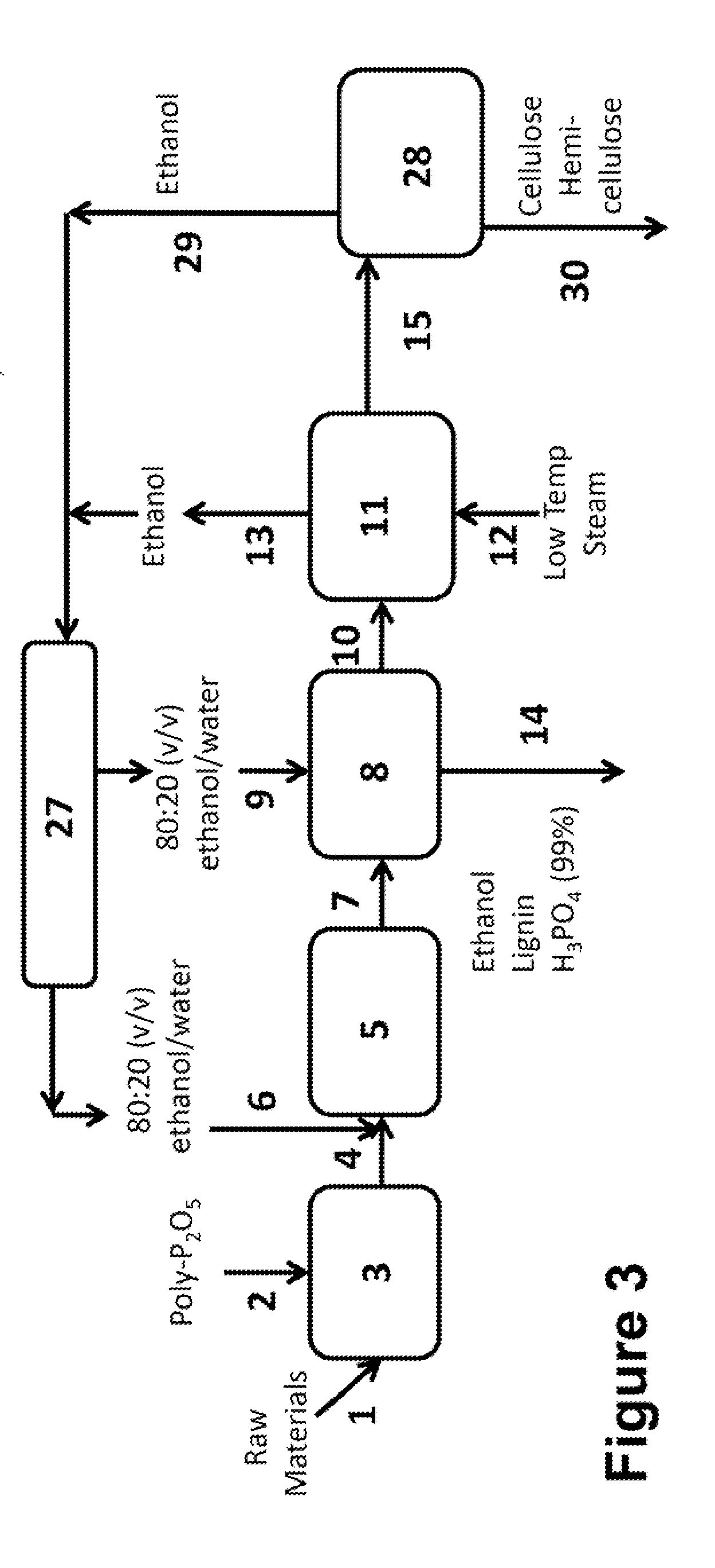Method and apparatus for lignocellulose pretreatment using a super-cellulose-solvent and highly volatile solvents
a technology of super-cellulose and solvent, applied in the field of alternative energy sources, can solve the problems of high processing cost of such a conversion process, high technology cost, and inability to meet the requirements of the plant material, and achieve the effect of effectively overcoming shortcomings and improving the conversion of plant material
- Summary
- Abstract
- Description
- Claims
- Application Information
AI Technical Summary
Benefits of technology
Problems solved by technology
Method used
Image
Examples
Embodiment Construction
[0035]Reference will now be made in detail to various exemplary embodiments of the invention, examples of which are illustrated in the accompanying drawings. It is to be understood that the following detailed description is not a limitation on the invention, but is instead provided to give the reader a better understanding of certain details of aspects and features of the invention.
[0036]Currently known technologies for conversion of plant material to useful energy sources have some limitations. Among those limitations are: 1) amorphous cellulose found in the aqueous phase of known compositions for production of energy sources has a low sugar concentration t 20-25 g sugar / L). Thus, it is desirable to re-concentrate the dilute sugar solution to a high sugar solution (>100 g sugar / L) before fermentation; 2) the markets for some co-products are yet not available or, if they are, such as in the case of lignin, large amounts of high quality co-products (e.g., lignin) are not produced; th...
PUM
| Property | Measurement | Unit |
|---|---|---|
| size | aaaaa | aaaaa |
| temperatures | aaaaa | aaaaa |
| particle size | aaaaa | aaaaa |
Abstract
Description
Claims
Application Information
 Login to View More
Login to View More - R&D
- Intellectual Property
- Life Sciences
- Materials
- Tech Scout
- Unparalleled Data Quality
- Higher Quality Content
- 60% Fewer Hallucinations
Browse by: Latest US Patents, China's latest patents, Technical Efficacy Thesaurus, Application Domain, Technology Topic, Popular Technical Reports.
© 2025 PatSnap. All rights reserved.Legal|Privacy policy|Modern Slavery Act Transparency Statement|Sitemap|About US| Contact US: help@patsnap.com



